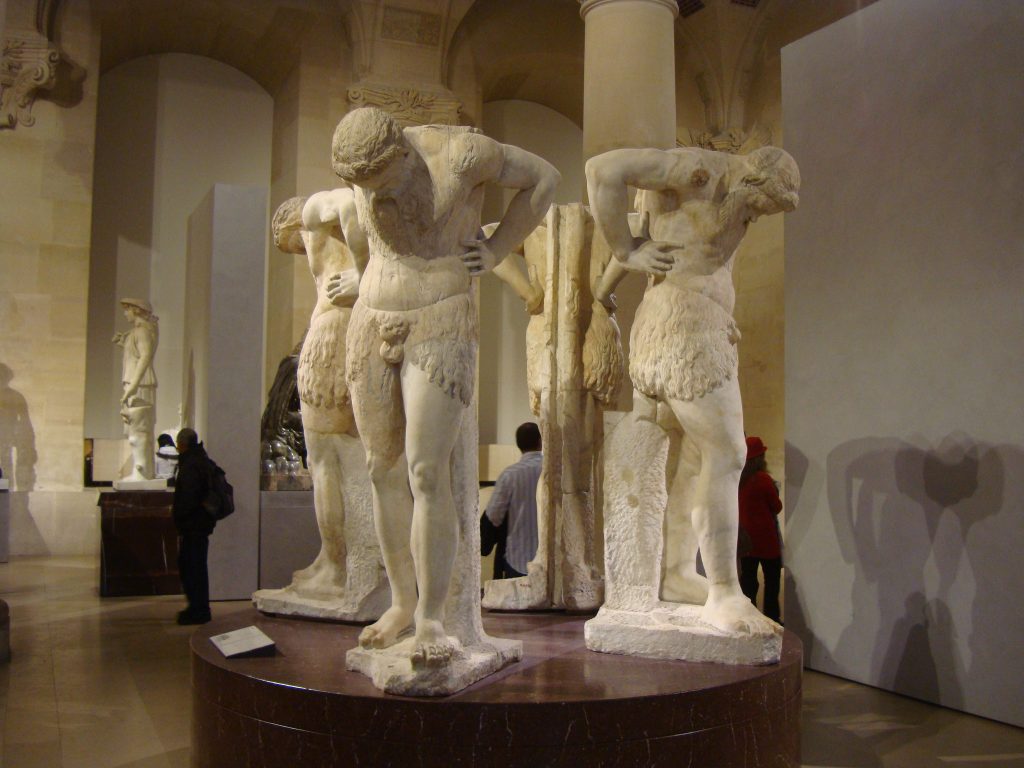By Maria Kuteeva (Erik Allardt Fellow at HCAS, Fall 2021)

Photo: Pixhere
Peer review is a cornerstone of academic activity, a marker of quality research and publication. As HCAS Director Tuomas Forsberg (2021) points out in the HCAS Newsletter 2020–2021, peer review is paramount to various activities at the Collegium, starting with the evaluations involved in the fellows’ selection process. In a broad sense, peer review can take many forms, ranging from formal written evaluations to informal spoken interaction. One of the most memorable and enjoyable experiences during my stay at the Collegium was the Fellows’ Seminar, where we discussed our research from different disciplinary perspectives and gave and received constructive feedback in a supportive and collegial environment.
At the same time, we are all engaged in other peer-reviewing activities in our own fields of research, and the demand for peer-reviewing keeps growing. For me, the year 2022 started with several requests to review two journal articles, a book, a research grant application, and a tenure application. Requests for peer reviews of journal submissions have been increasing, as a peer-reviewed journal article is now the most prestigious and desirable type of publication in many fields of research.
In this blog post, I focus on the ‘occluded’ genre (Swales 1996) of the anonymous peer review for academic journals. In today’s world of academic publishing, the journal and the complex of norms associated with its activities represent the main centres of authority. As concrete representatives of this authority, journal editors act as gatekeepers in the process of knowledge production, and peer review is meant to inform and support their decisions. The way in which peer review is currently set up often results in a hierarchical and structured activity, geared largely towards journals as centres of authority rather than our research peers. Has peer review become an oxymoron? What role do reviewers play in maintaining or challenging the authority of academic journals? How is this power dynamic manifested in the discourse of peer review? My discussion below engages with these questions.
The discourse of peer review: The reviewer, the author, and the manuscript
As we all know, not all peer review is conducted in the same spirit as our HCAS Fellows’ Seminar. The discourse of anonymous peer reviews is not always transparent, as criticism can be hedged and requests for essential changes can be phrased as polite suggestions (e.g. the author(s) might want to edit …). On the other hand, not all reviewers are as polite and tactful: harsh criticism can take rather personal undertones (see https://shitmyreviewerssay.tumblr.com). Hyland (2021) points out several other potential pitfalls associated with the peer review process: long decision delays, bias and subjectivity, and even dishonesty. For example, during the reviewing process for what would become a well-cited article co-authored with my then doctoral student for a top journal in our field, one reviewer provided comments littered with capitals, exclamation marks, expressions such as ‘gee what a finding’ and ‘what does this mean, honestly?’, and even threats ‘I really want to see this out of this paper and if it is not, I cannot recommend it for publication’. Although this was not the case with our submission, when taken to the extreme, peer review can be a mechanism for censorship.
As the sheer number of scholarly publications keeps growing, they seem to become increasingly standardised. Academic genres, such as the journal article, have evolved to reflect the rhetorical norms of research communities. Behind the façade of these normative genres is a process involving dialogue and negotiation, the main primary purpose of which is to advance knowledge in a research field. Journal reviewers and editors play a key role in this dialogic process, and their comments reflect the disciplinary, socio-economic, socio-cultural, and socio-political contexts in which they operate.
Research on the discourse of peer review is scarce because data are notoriously difficult to obtain. Previous studies conducted in applied linguistics have drawn on a limited dataset of reviews from one journal (e.g. Paltridge 2017). At the same time, interest in this topic is growing, and researchers are being asked to examine their own practices in order to demystify the peer-reviewing process. I have recently contributed one such study to a forthcoming volume titled The Inner World of Gatekeeping in Scholarly Publication (Kuteeva, in Habibie & Hultgren, forthcoming). The idea was to critically reflect on my own trajectory and practices as a peer reviewer, based on an analysis of 50 reviews that I have written over the last decade in response to manuscripts submitted to 15 academic journals.[i]

Photo: Library of Congress, Prints & Photographs Division
Although the peer review is an academic genre, its discourse features are not the same as those of published genres like journal articles or books. The dialogic and evaluative features are more pronounced, as evidenced by the abundance of stance expressions and directives (Paltridge 2017; Samraj 2021). In line with previous studies, my initial corpus-assisted analysis points towards the centrality of evaluative and attitudinal stance in the discourse of my peer reviews, manifested in the frequent use of the pronoun I accompanied by various stance verbs (e.g. I agree, I believe, I (cannot) recommend, I find, I suggest, I wonder). All stance-taking acts involve two subjects (e.g. the speaker and the audience) and an object, thereby forming the stance triangle (Du Bois 2007). In peer review, this triangle involves, above all, the reviewer, the author of the journal submission (the audience), and the manuscript as the object of the stance-taking act.
Unlike in spoken interaction, the dialogue in peer review is written and asynchronous. In this context, the centrality of the journal adds a communicative dimension in line with Bakhtin’s (1986) concept of ‘superaddressee’, a metaphor used to describe a complex of norms or a larger body of authority. In academic publishing, this dimension involves journal readers as individuals, the research community as a collective and abstract entities, such as research ethics and language standards. Thus, the reviewer’s utterances are not only directed at the author of the manuscript: they are also shaped with reference to a higher evaluating authority of a perceived centre, in other words, the editors or the journal readership more broadly.
Although the object of the stance-taking act – the journal submission – remains the same, the reviewer role can change from that of evaluator to advisor, peer or (proof)reader. Accordingly, the audience of the reviewer’s utterances may expand to include the editor, the journal readership or the research community more broadly. Evaluations are accompanied by different stances towards the journal submission. Shifting between different reviewer roles can also involve different alignments with the audience to either include or exclude the author or the editor. For example, the reviewer may address the author directly (I suggest swapping the order of the subsections) or else choose to align with the journal editor by mentioning the author in a dependent clause (I recommend that the authors review some more recent literature).
The shifts between different reviewer roles and audiences are manifested through register variation, in which ‘clustered and patterned language forms (…) index specific social personae and roles’ (Blommaert 2007: 117). Resorting to a particular register is a way to index belonging to a particular group with its own repertoire of voices, e.g. the reviewer as an evaluator and expert in the field (e.g. I cannot recommend this article for publication) or a friendly and supportive peer (e.g. have you considered doing it this way?). For example, the reviewer as evaluator can resort to conventional ‘reviewer speak’, aligning with the journal editor (e.g. I cannot recommend this article for publication) or indicating to the author how the manuscript can be improved (I found this section surprisingly short). The expert role concerns the reviewer’s knowledge of the field and what research is needed to advance knowledge in the field (the article has the potential to offer new insights into…). As an advisor, the reviewer is likely to either directly or indirectly address the author (I suggest swapping the order of these subsections). The peer role is similar to that of advisor but involves more proximity with the author, for example through the use of the pronoun you. As (proof)reader, the reviewer may comment on the quality of the text and point out specific infelicities.
The reviewers’ role: Maintaining the status quo or challenging the journal’s authority?
Authority in accepting an article for publication resides with the journal editors, and the peer review process is meant to inform and support the editor’s decision. To make a convincing recommendation for the journal, the reviewer is likely to resort to register features that index their proximity to the journal as the centre of authority. In this context, the very concept of peer review appears to be an oxymoron, as it is, in fact, a hierarchical and structured activity oriented primarily towards journals as perceived centres of authority and expertise rather than our colleagues and research peers.
Although academic journals hold strong authority and have established gate-keeping mechanisms, they may also have their caveats. Since these journals represent both real and perceived centres, their practices risk becoming too centripetal and inward-looking. Based on the existing literature and my own experience, I would argue that there are two main limitations, which can be broadly described as anglo-centricity and ‘disciplinary navel-gazing’. The question of anglo-centricity has been debated in connection with the reported challenges experienced by non-anglophone researchers in getting their work published (e.g. Canagarajah 2002; Hyland 2016). For example, a great deal of debate in the applied linguistics research community has revolved around questions concerning linguistic (in)justice caused by the dominance of English and the need to move away from norms based on established varieties of Standard English (see, e.g. Hynninen & Kuteeva 2017; Kuteeva & Mauranen 2014; McKinley & Rose 2018).
There are also more subtle and serious biases that extend beyond language issues. In 2020, the journal Applied Linguistics (OUP) hosted a debate about knowledge production in the field, challenging the dominance of certain modes of enquiry and raising awareness of the need to decolonise scholarship, for example by engaging with epistemologies of the Global South. Hultgren (2019) shows how the controversies around the dominance of English disregard the importance of socioeconomic factors in shaping publication practices. Finally, we cannot underestimate the importance of languages other than English in increasing societal impact and sustaining language diversity in research activities, not only publishing but also assessment, funding and so forth. The Helsinki Initiative on Multilingualism is at the forefront of this movement by promoting equal access to research findings in a variety of languages, offering support to national publishing infrastructures and providing equal rewards for publications in different languages.
‘Disciplinary navel-gazing’ appears to be a side effect of the need to provide journal publication outlets in specific fields, which can ultimately lead to (re)producing the same kind of knowledge. Academic journals have a key role to play in maintaining or challenging this status quo. Much too often, publications end up harping on the same note, as the authors are encouraged to cite previous research that appeared in the same journal, whose authors then act as reviewers of new submissions. The need to increase the journal impact factor also makes it easier for highly-cited authors to have (any) work accepted in quality journals because it is likely to attract more citations. The two perceived limitations – anglo-centricity and disciplinary navel-gazing – may be intertwined, particularly in fields where English is the dominant language of research communication and where evaluation is based on quantitative indicators.

Satyres en atlante, Unknown Artist, II century after J.C., Rome. Photo by Gregg Tavares. https://www.flickr.com/photos/greggman/4305490456/in/photolist-7ysLj5-a5Vsnw-hGT6T-hGT8v. Photo uploaded on 16.1.2010. Accessed on 1.2.2022.
Where does the peer reviewer stand in this landscape? Is it possible for peer reviewers to contribute to addressing the aforementioned caveats regarding academic journal publishing? I would argue that it is possible. The reviewer is in a position to challenge centripetal journal practices without misaligning with the journal and its editors. This involves a balancing act between aligning with the journal as an established centre of authority (e.g. through the use of an appropriate register) while at the same time questioning aspects of research that are associated with the two limitations.
In my experience, one straight-forward strategy is to alert the authors and editors of journal submissions to cutting-edge research carried out in non-anglophone contexts (sometimes in languages other than English) and to encourage them to engage with it more thoroughly. It is not unusual for authors working in an anglophone context to assume that their readers would share background knowledge about their research context. However, the same cannot be said for authors who write in English but are based in non-anglophone contexts. This kind of indirect benchmarking can be limiting. In my peer reviews, I have encouraged authors working in both kinds of contexts to take a reflective approach and discuss their own positionings.
Last but not least, it is important – particularly for scholars in the humanities – to keep an open mind about writing conventions and not to be overly confined by the straitjacket of templates and increasingly standardised academic genres. I am sure there are other good strategies for overcoming limitations of the perceived centres of authority in knowledge production and would be delighted to hear your views.
To sum up, although academic journals function as the main centres of authority in writing for research publication, they come with their limitations, as centripetal trends in the practices surrounding knowledge production and publication can be counterproductive to moving the research field forward. By mediating the dialogue between the authors and the journal, peer reviewers have a key role to play in both maintaining and challenging the journals’ authority as centres of knowledge production.
References:
Bakhtin, M. (1986) Speech Genres and Other Late Essays (C. Emerson and M. Holquist, eds) (V. McGee, trans.). Austin, TX: University of Texas Press.
Blommaert, J. (2007) Sociolinguistics and discourse analysis: Orders of indexicality and polycentricity. Journal of Multicultural Discourses 2 (2), 115–130.
Canagarajah, A. S. (2002). A geopolitics of academic writing. Pittsburgh: University of Pittsburgh Press.
Du Bois, J. (2007). The stance triangle. In Englebretson, R. (ed.), Stancetaking in discourse: Subjectivity, evaluation, interaction. Amsterdam / Philadelphia: John Benjamins.
Forsberg, T. (2021). “The Quality of Academia Depends on the Quality of Reviewing”, Tuomas Forsberg (HCAS Newsletter 2020–2021, https://www2.helsinki.fi/sites/default/files/atoms/files/hcas_newsletter_2021.pdf)
Hultgren, K. (2019). English as the language for academic publication: On equity, disadvantage and “non-nativeness” as a red herring. Publications, 7 (2), 31.
Hyland, K. (2016). Academic publishing and the myth of linguistic injustice. Journal of Second Language Writing, 31, 58–69.
Hynninen, N. & Kuteeva, M. (2017). Good” and “acceptable” English in L2 research writing: Ideals and realities in history and computer science. Journal of English for Academic Purposes, 30, 53-65.
Kuteeva, M. (forthcoming). Polycentric peer reviewing: Navigating authority and expertise. In Habibie, P. and A.K. Hultgren (eds.). The inner world of gatekeeping in scholarly publication. Palgrave Macmillan.
Kuteeva, M. and Mauranen, A. (2014). Writing for international publication in multilingual contexts: An introduction to the special issue. Journal of English for Academic Purposes, 13, 1-4.
McKinley, J. & Rose, H. (2018). Conceptualizations of language errors, standards, norms and nativeness in English for research publication purposes: An analysis of journal submission guidelines. Journal of Second Language Writing, 42, 1-11.
Paltridge, B. (2017). The discourse of peer review: Reviewing submissions to academic journals. London, UK: Palgrave.
Samraj, B. (2021). Variation in interpersonal relations in manuscript reviews with different recommendations. English for Specific Purposes, 62, 70-83.
Swales, J. (1996). Occluded genre in the academy: The case of the submission letter. In E. Ventola and A. Mauranen (eds.), Academic writing: Intercultural and textual issues. Amsterdam/Philadelphia: John Benjamins.
[i] The reviews were written for the following journals: Applied Linguistics, Discourse, Context and Media, English for Specific Purposes, Higher Education, International Journal of Bilingual Education and Bilingualism, Journal of English for Academic Purposes, Journal of English for Research Publication Purposes, Journal of Multilingual and Multicultural Development, Journal of Pragmatics, Journal of Second Language Writing, Linguistics and Education, Multilingua, Nordic Journal of English Studies, Studies in Higher Education, System.